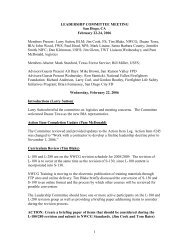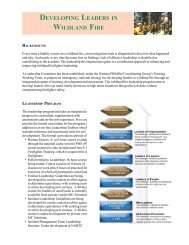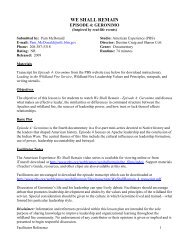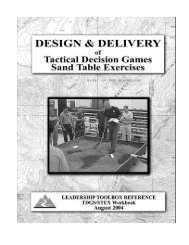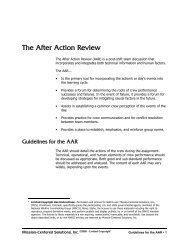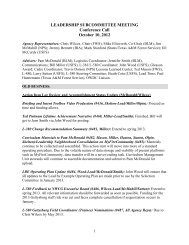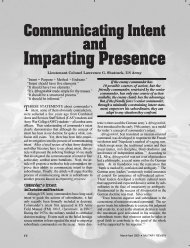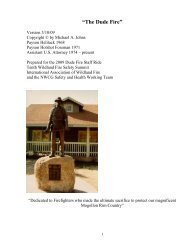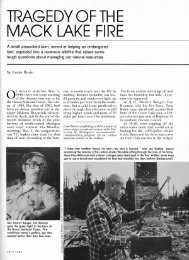Sadler Fire Staff Ride - Wildland Fire Leadership Development
Sadler Fire Staff Ride - Wildland Fire Leadership Development
Sadler Fire Staff Ride - Wildland Fire Leadership Development
Create successful ePaper yourself
Turn your PDF publications into a flip-book with our unique Google optimized e-Paper software.
<strong>Sadler</strong> <strong>Fire</strong> <strong>Staff</strong> <strong>Ride</strong>Stand #2-Firing-Strategic Talking Points (STPS)According to local notes and observations by the Air Tactical Group Supervisors and Elko Managementthere was a priority to protect ranches and structures near the southern end of the Sulfur Springsmountain range (the southernmost part of the <strong>Sadler</strong> fire). Visibility of divisions O, N and Q from theair was null. The fire’s airspace was being shared by two Air Tactical Group Supervisors due to the sizeand complexity of the fire, but they were having issues communicating with the providedfrequencies 3 . Burning the northernmost part of the <strong>Sadler</strong> fire (the dozer line) was proposed as a longterm strategy only when there was a break in visibility (on the 8 th of August). The dozer line was put inthe night prior to being burned and there was a forecasted cold front predicted for the 10 th of August.As an outgoing member of the Type 2 organization either demobilizing from the fire or transitioning intoanother role, how critical is disseminating strategic information from shifts prior? Some people tend tobelieve that they can start with a fresh slate when organizing an ongoing incident, is there value in reorganizingand omitting previous strategic plans? Was there an imminent need to conduct a burn-out atthe northernmost division of the <strong>Sadler</strong> <strong>Fire</strong> on this division on August 9 th ?The Incident Action Plan for the 8.9.99 day shift shows Dalton IHC, Smokey Bear IHC and GNP #3assigned to Division “N” (Chuck Frank). Due to a vehicle failure en route to the “Big Safety Zone”Horton (GNP #3) was unaware of the plan which was established by Frank, Shepard, Smokey Bear IHCand Dalton IHC. GNP #3 was assigned an operation on an adjoining Division Q (Shepard). Resourcescontinued to arrive and Shepard was “swamped at this time by radio traffic, the number ofresources reporting, the number of resources just turning up . . .”How could the team have mitigated potential span of control issues?Contrasting our knowledge of fire operations today what large scale strategic steps could havebeen taken to effectively manage the influx of resources relative to the fire’s growth?Stand #2-Firing-High Reliability OrganizingAs the Crew Boss originally assigned to a division with 2 IHC’s, how might you “develop skills . . . that willallow for improvisation and action when a failure occurs” (Commitment to Resilience)?If you knew that there were other crews on this division with you what questions would you ask theHotshot Superintendents and others on the division to broaden your understanding of what ishappening and “defer to expertise”?It has been noted that there “. . . was a combination of safety and sound tactics that required thedecision to anchor and secure the east side first.” As a Division Supervisor, what signal (weak orstrong) might prompt you to adjust interim tactics and strategy? What other information would youneed and what questions would you ask of your resources to develop a plan?3 Air Attack information and northern Nevada situation information provided by Steve Dondero (Elko Air Attackduring the <strong>Sadler</strong> Complex) and Jeff Gardetto (Air Support Group Supervisor on Ed Storey’s Type 1 Team); northernNevada situation information provided by Jeff Arnberger (<strong>Fire</strong> Operations Specialist during the <strong>Sadler</strong> Complex)Page | 9



